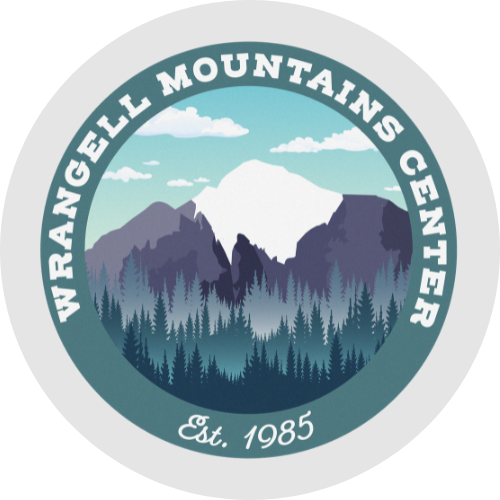2017 Meg Hunt Residency Program
by Meredith Leich
I spent a year looking at glaciers from space. How little this prepared me for the real thing. On an unusually warm June day, my friend Nina Elder and I walked north from Kennecott beneath a wide blue sky. Slapping at the slow-moving mosquitoes, we marveled at the expanse of the Kennicott Glacier’s moraine, which first appeared to me, confusingly, as a valley of rippling brown and gray dunes. I thought of the ice hidden beneath the layers of rock; how the rock had traveled the length of the glacier over thousands of years; how the glacier’s terminus melted into a lake a few miles behind us, rocks occasionally tumbling into the icy water with a satisfying splash.
After half an hour or so, we reached the seam where two glaciers converged: the Root Glacier gleaming white in contrast to the tawny tail of the Kennicott. Turning off the trail, we scrambled down to the winding stream of glacial melt where the Root Glacier met an eroded bank of rock and dirt. Crouching, we strapped crampons over our hiking boots, taking care to avoid gashing our bare legs with the metal spikes. With a large step, we cleared the stream. We were on the glacier. It felt like stepping onto the moon.
Over my previous year in Chicago, I had teamed with glaciologist Andrew Malone on an art-science project. We focused on Quelccaya, the world’s largest tropical glaciated area, located high in the Andes Mountains in Peru. Because Quelccaya is so remote, we worked with years of satellite imagery captured by the US’s Landsat Program. In the images, Quelccaya’s ice appeared as a white splotch amidst a patchwork of green and brown mountains. In an attempt to better understand, I translated a radar image of Quelccaya into a virtual 3D topography using animation and gaming software. We could digitally zoom over the slopes and dips of the glacier’s surface and see how it sat atop mountains in a sprawl that nearly encompassed Chicago -- all within the sterile world of my computer screen.
Now the reflection of the real ice was blinding: white light everywhere. Even with sunglasses, I felt a little dizzy. I had the curious impression we were at the beach. The breeze blew colder over the ice, and I pulled on a jacket. If I held my hand six inches above the ice, I could feel the cool wafting upward like an open refrigerator in summer. The ice rose and fell in banks and valleys, distorting my read on distance: how far away was that ridge? And the mountain beyond? The dimpled surface of the ice was riven with a long crease, from shallow cracks to deep blue slices that cut to the sound of running water far below. Indeed, I could hear water everywhere: the rushing stream behind us, the networks of water trickling over the surface of the ice, and, in the distance, the deeper gush of a glacial waterfall. The glacier was not an immobile slab of ice, nor a fixed mountain, but a vast system of activity, changing, moving, accumulating, melting.
My time in the Meg Hunt Residency Program made it apparent, going forward, I would need ways to portray the glacier in my art. This task will carry me through another winter in Chicago.
Are you interested in joining us for the 2018 Meg Hunt Residency Program? Learn more and apply today at Call for Entry.
This is an article from the 2017/18 Hardware Store Herald. Download the full Herald by clicking HERE.
Click HERE to learn how you can help support the WMC today.



